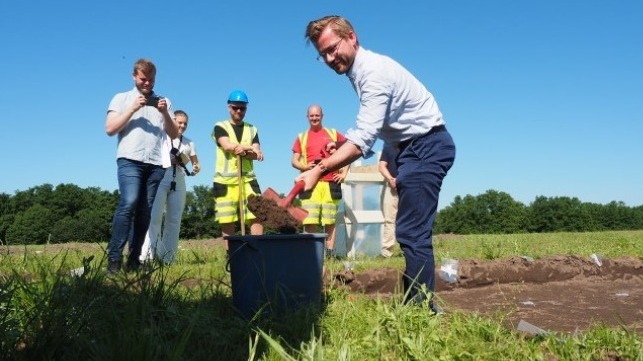Excavation of Rare Viking Burial Ship Begins

Archaeologists have begun the excavation of the first Viking burial ship discovered in Norway in 100 years. The operation began Friday when Norwegian environment minister Sveinung Rotevatn took the first shovelful of soil in a field outside of Halden, Norway.
"The Gjellestadship is a discovery of outstanding national and international importance. The finding is very vulnerable to human intervention and climate change, and we know it is undergoing active degradation. Therefore, it was necessary for the government to provide an extraordinary license over the revised state budget in order to stop the degradation and secure the discovery and the potential for knowledge as quickly as possible," said Rotevatn.
The lead excavator is archaeologist Christian Rødsrud from Norway's Museum of Cultural History. His team expects the operation to take about five months.
"There is every reason to wish them luck as this will not be an easy task. The 2019 trial excavation showed that the ship is in a very poor condition and that only parts of the timber have been preserved," said Dr. Knut Paasche of the Norwegian Institute for Cultural Heritage Research (NIKU).
In a trial excavation last year, Paasche's team uncovered a portion of the vessel to conduct an assessment. The site is adjacent to a drainage ditch - a prescription for wet earth - and an examination showed decay in the upper portion of the hull. While precise dating was not possible, the team was able to determine that the timber could not have been hewn before 732, putting its likely age between the late 700s and early 900s.
The reason that archaeologists wish to complete the acceleration on a rapid timetable is the risk that fungus will further degrade the vessel's structure. In the first stage, the team will remove and sieve the top layer of soil. In the second phase, they will excavate the stern, then work their way towards the bow of the ship. The team expects to make its most interesting finds in the last stage of the search.
While the vessel is in poor shape, the archaeologists expect that with modern methods it will still be possible to identify and recreate its design in precise detail. In addition, the excavation should turn up other artifacts from the grave site, which could yield clues about Viking society.
